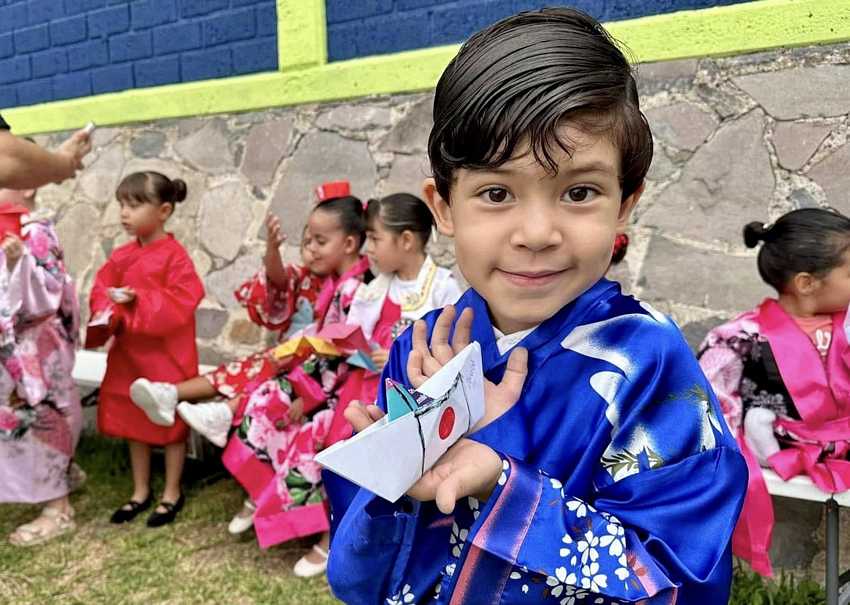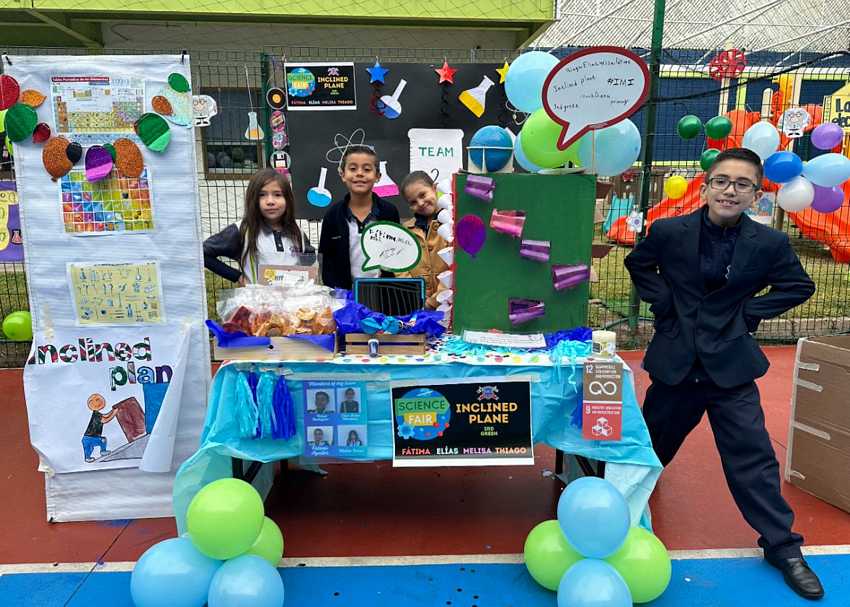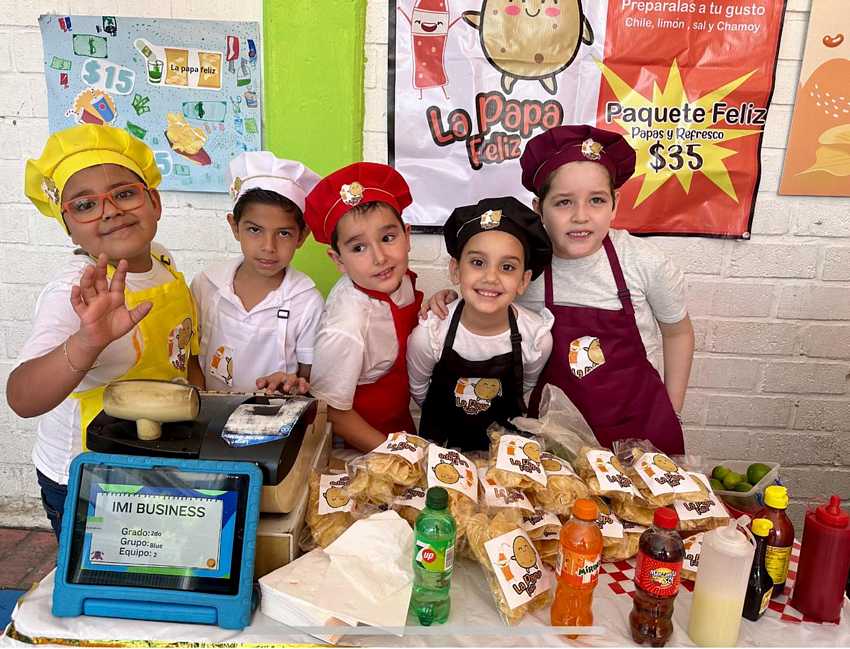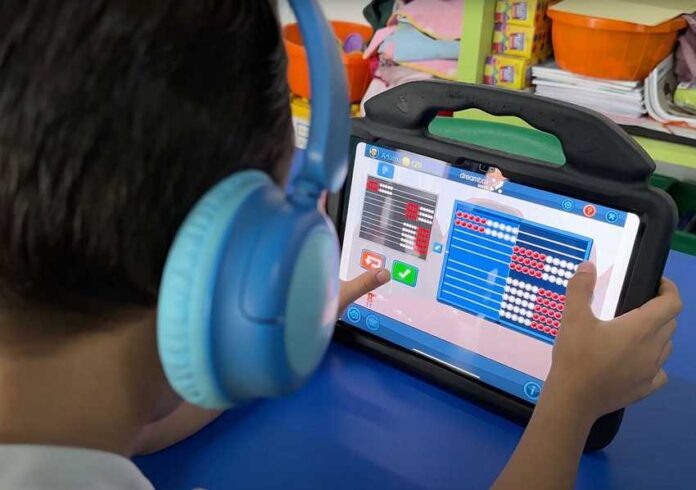While school systems around the world debate whether children or even their teachers should use AI, Guadalajara’s award-winning Instituto México Inglés (IMI College) —accredited by Cognia, a major school-accreditation body that upholds U.S. educational standards throughout the world — has already incorporated Artificial Intelligence into its approach, one of the first schools in Mexico to do so.
Coaches instead of teachers
In 2015, IMI began replacing traditional textbooks, teachers and curricula with iPads, coaches and a monthly challenge that transforms students into investigators and researchers.

Why coaches rather than teachers? Says IMI Director Luis Medina: “We call them coaches because we want them to behave like sports coaches. Sports coaches don’t do the push-ups for you, don’t play the game for you. They’re on the side supporting you, but you get to play the game.”
Every morning, the kids at IMI check their instructions for the day’s activities, and their coach tells them what they will be trying to accomplish. Then everybody puts their shoulder to the wheel.
Gemini to the rescue
Now, Medina told me, AI has been incorporated into the program, thanks to Google, which recently launched a version of its Gemini program designed for students under the age of 13.
“Each of our students now has his or her own specialized virtual assistant,” Medina told me. “So if a student didn’t understand something his coach explained in math, he can go to his ‘Math Gem’ and the Gem will explain everything. And, of course, you can converse with AI, as if it were a person. The Gem is told: ‘You are an expert in math for kids in third grade. Your job is to help the student.’
“Maybe the child says, ‘I didn’t understand addition and subtraction of fractions.’ So the AI explains how to add and subtract fractions. And it can keep on explaining until the student gets it. It has endless patience.”
Apart from Gemini, explained Medina, Google has created other AI programs for schools like his.

“There’s Google NotebookLM, for example. You just show a PDF to it and you say: turn this into a mental map, into a podcast, summarize it, turn it into a study guide.”
AI Studio
“Then there is AI Studio. It helps the students to create videos, images, presentations, or spreadsheets. These three applications give the student a lot of information and ways to do deeper investigations. For example, the student says, ‘Make me a video about a plant, showing all the stages from seed to flower.’
“Then the student shares this with his or her companions, and later this is included among the group’s monthly publications. They have to create a magazine with images, text and videos. They take the material AI gives them, and rework it, giving it their own personal touch.”
Google also has special forms of Gemini to assist the school’s staff. “We now have our own experts in psychology, planning, mathematics and even in educational law,” Medina says, “to make sure the teachers don’t do something that could be considered negligent or illegal.”
Kids turned into researchers
Since his school has done away with textbooks, I asked Medina what it is that students work on day by day.
I learned that every month, the coaches present the students with a challenge. For example, they might ask second graders, “How can you protect endangered species in your community?” More specifically, the children might be asked, “Which animals do I see in my community? How are they treated?”

These might be followed by even more specific questions, like “What do I feel when I’m in contact with nature, with animals? How do I personally take care of them?”
Then they investigate. Which of these animals belongs to my state or my city or my country? What are their needs? Where do they live? What has happened to them?
All these questions lead the students into geographical and historical studies of the type Mexican educational authorities want to see. Then they might collaborate to create solutions to these problems, asking themselves, “What can we do? How can we prevent animals from becoming extinct?”
“It’s wonderful how they put these things into action,” Medina told me. “Little kids from second grade will put bird feeders outside their house. They come up with so many ideas!”
To carry out their research, the kids use an iPad. “You’d be amazed at what you can do with it,” says Medina. “It can become a microphone, a camera, a microscope, a telescope or a publisher. On your dining room table, it can project a chemistry set which you can actually use, or a model of a river basin, or even the entire solar system. It’s a powerful tool.”
The future of AI
“In the world of learning, where is AI taking us?” I asked another of Mexico’s innovative educators, who wishes to remain anonymous.
“One thing is clear,” she replied. “In a very near future, it’s not going to be about humans versus AI. It’s going to be between humans who know how to use AI in their favor and those who don’t. At one point in time, forks, knives and fire were super innovative. Well, fire is a technology that transformed us. But if you don’t use it carefully, you get burnt.”
John Pint has lived near Guadalajara, Jalisco, for more than 30 years and is the author of “A Guide to West Mexico’s Guachimontones and Surrounding Area” and co-author of “Outdoors in Western Mexico.” More of his writing can be found on his website.
